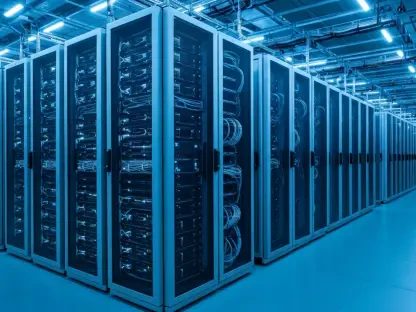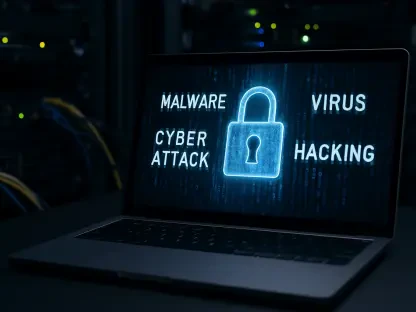As energy demand accelerates worldwide and the shift toward renewable sources gains momentum, utility companies face a dual challenge: modernizing their grid infrastructure while ensuring robust cybersecurity measures to protect against escalating threats. These innovations are necessary for seamless power delivery and crucial for safeguarding public safety and economic stability. The increased connectivity of power substations, distribution equipment, and renewable facilities exposes the grid to sophisticated cyber threats. In response, the utility sector must embrace a comprehensive cybersecurity strategy to enhance digital resilience. Cisco’s extensive experience in supporting utilities to digitize their operations highlights four foundational principles. These guidelines are essential to fortifying a secure and resilient energy grid, adapting to both current and evolving challenges of the digital landscape.
1. Integrating Cybersecurity into Network Infrastructure
A fundamental step toward achieving cyber resilience for utilities involves embedding security measures directly into networking components instead of merely adding on multiple security solutions. A secure-by-design Wide Area Network (WAN) infrastructure not only simplifies security operations but also helps reduce associated costs. As utilities expand and modernize their grid, ensuring advanced and reliable networking solutions that provide scalability becomes pivotal. Thousands of smart grid devices across diverse terrains need seamless connectivity using available backhaul technology. From bustling urban centers to remote rural areas, space constraints necessitate security’s integration into the network itself, ensuring a balance between functionality and protection.
Industrial routers equipped with modular WAN interfaces facilitate smooth transitions across various technologies, including multiple 4G/LTE and 5G spectrums. Ruggedized routers and switches, compliant with certifications like IEC 62443-4-1 and IEC 61850-3, prepare utilities for secure deployments even in challenging environments. Incorporating cybersecurity features directly within routers connected to critical grid assets eliminates the need for additional appliances in distant locations. Attributes like application layer firewalls, complex Next-Generation Firewalls (NGFW), and Snort intrusion measures help detect and block threats in real time, alongside Advanced Malware Protection (AMP) for proactive threat containment.
2. Ensuring Secure Physical Connections in the Field
Securing grid networks begins with safeguarding physical connections in diverse and often hard-to-control settings. Reliable security protocols are necessary starting points, ensuring only authorized devices can physically access network interfaces. Adopting zero-trust principles is crucial, particularly when unauthorized actors may potentially access networking enclosures. Restricting access based on device-specific identifiers, such as MAC addresses, can thwart unauthorized intrusions effectively. Cisco Industrial Routers, notable for their security management features, aid administrators in maintaining controlled access to network ports, leveraging solutions like Cisco Identity Services Engine (ISE) to scale asset identity management.
By rigorously implementing these measures, utilities can foster a secure network environment that resists unauthorized access attempts. Comprehensive security configurations, tailored to meet varying needs of field networks, form an essential defense layer. Protecting the initial access point thus prevents potential exploitation of the network, maintaining a fortified perimeter against external threats. Consistent policy application, owing to centralized management capabilities, ensures reliable protection extended across expansive grid networks.
3. Network Segmentation for Risk Mitigation
Effective risk management in utility grids involves meticulous network segmentation, reducing cross-communication to essential interactions. Within substations or renewal production sites, not every device needs universal communication access. Limiting device-to-device interaction to necessary task-specific communications significantly curtails potential breaches. System segmentation also isolates critical systems from less-sensitive ones, mitigating the spread of malicious activities. By segregating network traffic and implementing precise policies, utilities achieve a strategic “defensive depth,” safeguarding network integrity even if a segment faces compromise.
Segmenting networks into functional virtual subdivisions enhances network security managers’ abilities to design isolated communication environments. Tools like Cisco Identity Services Engine (ISE) facilitate the implementation of segmentation policies at scale, ensuring traffic flows remain regulated within distinct operational boundaries. This structural division not only helps in localizing potential damage from breaches but also streamlines regulatory compliance processes. Segmenting utilities’ networks is pivotal to ensuring that if one area encounters issues, the impact on the larger system remains minimal.
4. Centralizing and Automating Network Security Operations
Modern grid infrastructures, characterized by their complexity across multiple locations, require streamlined security and network management solutions. With tools like Cisco Catalyst SD-WAN Manager, utility networks achieve centralized orchestration, consolidating routers and security operations under a single umbrella. This centralization enhances security consistency, plugging gaps while simplifying grid infrastructure management. Automation capabilities integrated into such central systems diminish manual configuration needs, thereby accelerating deployment timelines and ensuring uniform policy enforcement.
Automated processes support critical functions like provisioning security keys and virtual private networks (VPNs), essential for large-scale utility networks. Streamlined deployment ensures rapid adaptability, enabling utility companies to address emergent threats efficiently without diluting security measures. Centralized control offers clearer oversight, unifying security policies across expansive networks. This holistic orchestration reduces operational challenges and provides a coherent frontline defense against emerging cyber threats in the utility sector.
Building Cyber Resilience for a Modern Energy Grid
Achieving cyber resilience for utilities requires embedding security measures into networking components rather than simply adding multiple security solutions. A secure-by-design Wide Area Network (WAN) infrastructure streamlines security operations and helps lower costs. As utilities expand and modernize their grid, implementing advanced networking solutions that offer scalability becomes crucial. Smart grid devices across varied regions need seamless connectivity, utilizing available backhaul technology. In diverse settings—from urban centers to rural areas—space constraints make it necessary to integrate security within networks to maintain both functionality and protection.
Industrial routers with modular WAN interfaces offer easy transitions across technologies like various 4G/LTE and 5G spectrums. Rugged routers and switches, meeting standards like IEC 62443-4-1 and IEC 61850-3, ensure secure deployments in harsh environments. Including cybersecurity features directly in routers connected to critical assets reduces the need for extra devices. Features such as application layer firewalls, NGFWs, Snort intrusion detection, and Advanced Malware Protection provide real-time threat identification and containment.









